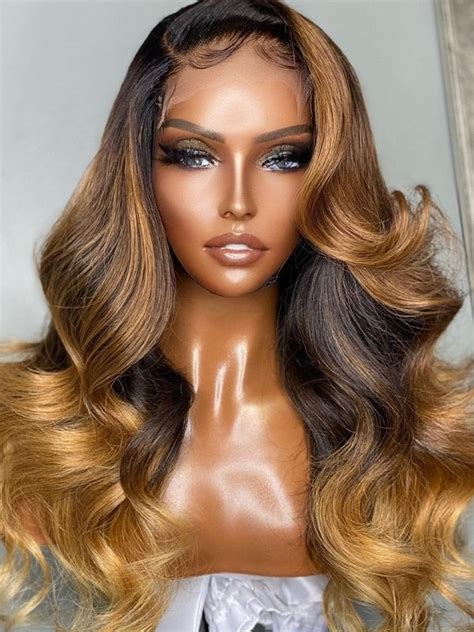What is a wig?
A wig is a head covering made of human hair, animal hair, or synthetic fibers. Wigs are used to cover baldness, enhance one’s appearance, or for religious or cultural reasons.

Why should I wear a wig?
There are many reasons why someone might choose to wear a wig. Some people wear wigs to cover baldness or hair loss caused by medical conditions such as cancer or alopecia. Others wear wigs to enhance their appearance by adding volume, length, or color to their hair. Wigs can also be used for religious or cultural reasons, such as by Orthodox Jewish women who cover their hair in public.
What are the different types of wigs?
There are many different types of wigs available, made from a variety of materials and in a variety of styles. Some of the most popular types of wigs include:
- Human hair wigs: Human hair wigs are made from real human hair, which gives them a natural look and feel. They are the most expensive type of wig, but they are also the most durable and can last for several years with proper care.
- Synthetic hair wigs: Synthetic hair wigs are made from synthetic fibers, such as nylon or polyester. They are less expensive than human hair wigs, but they are not as durable and can become frizzy or tangled over time.
- Lace front wigs: Lace front wigs have a lace front that creates the illusion of a natural hairline. They are more expensive than regular wigs, but they offer a more realistic look.
- Full lace wigs: Full lace wigs are made entirely of lace, which makes them very lightweight and comfortable to wear. They are the most expensive type of wig, but they offer the most natural look and feel.
How do I choose the right wig?
When choosing a wig, there are several factors to consider, including:
- Your face shape: The shape of your face will determine which wig styles will look best on you. For example, if you have a round face, you will want to choose a wig with a longer length and layers to help elongate your face.
- Your hair type: If you have fine hair, you will want to choose a wig with a lighter weight and less volume. If you have thick hair, you can choose a wig with more weight and volume.
- Your lifestyle: If you are active or have a busy lifestyle, you will want to choose a wig that is easy to care for and style. If you are looking for a wig for special occasions, you can choose a wig with more elaborate styling.
How do I care for a wig?
The best way to care for a wig is to follow the manufacturer’s instructions. However, there are some general tips that can help you extend the life of your wig:
- Wash your wig regularly: Wigs should be washed every 7-10 days, or more often if you wear it daily. Use a mild shampoo and conditioner designed for wigs.
- Avoid heat: Heat can damage wigs, so avoid using hot tools such as blow dryers or curling irons. If you need to style your wig, use a cool setting and keep the heat away from the hair.
- Store your wig properly: When you are not wearing your wig, store it in a cool, dry place. Avoid storing your wig in direct sunlight or near heat sources.
Where can I buy a wig?
Wigs can be purchased from a variety of sources, including:
- Beauty supply stores: Beauty supply stores sell a wide range of wigs, from inexpensive synthetic wigs to high-end human hair wigs.
- Online retailers: Online retailers such as Amazon and eBay sell a wide range of wigs at a variety of prices.
- Wig salons: Wig salons specialize in selling and styling wigs. They can help you choose the right wig for your needs and provide you with expert advice on how to care for your wig.
Conclusion
Wigs can be a great way to cover baldness, enhance your appearance, or express your individuality. With so many different types of wigs available, there is sure to be a wig that is perfect for you.
Additional tips
Here are some additional tips for wearing a wig:
- Start with a clean scalp: Before putting on your wig, make sure your scalp is clean and dry. This will help to prevent itching and irritation.
- Use a wig cap: A wig cap can help to keep your own hair in place and prevent it from showing through the wig.
- Secure your wig: Use bobby pins or wig clips to secure your wig in place. Make sure the wig is snug, but not too tight.
- Style your wig: You can style your wig using a variety of methods, such as brushing, blow drying, or curling. Be careful not to use too much heat, as this can damage the wig.
- Take care of your wig: Follow the manufacturer’s instructions for care and maintenance. This will help to extend the life of your wig.
Common mistakes to avoid
Here are some common mistakes to avoid when wearing a wig:
- Wearing a wig that is too heavy or too tight: This can cause discomfort and headaches.
- Using too much heat on your wig: This can damage the wig and make it look unnatural.
- Not washing your wig regularly: This can lead to build-up of dirt and oil, which can cause itching and irritation.
- Storing your wig improperly: This can damage the wig and make it look frizzy or tangled.
Pros and cons of wearing a wig
Pros:
- Wigs can help to cover baldness or hair loss.
- Wigs can enhance your appearance by adding volume, length, or color to your hair.
- Wigs can be used for religious or cultural reasons.
- Wigs are a versatile and affordable way to change your look.
Cons:
- Wigs can be uncomfortable to wear, especially if they are too heavy or too tight.
- Wigs can be damaged by heat and chemicals.
- Wigs require regular care and maintenance.
- Wigs can be expensive.
Conclusion
Wigs can be a great way to cover baldness, enhance your appearance, or express your individuality. However, it is important to choose the right wig for your needs and to take care of it properly. By following these tips, you can extend the life of your wig and enjoy wearing it for years to come.
